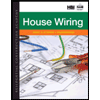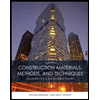
Architectural Drafting and Design (MindTap Course List)
7th Edition
ISBN: 9781285165738
Author: Alan Jefferis, David A. Madsen, David P. Madsen
Publisher: Cengage Learning
expand_more
expand_more
format_list_bulleted
Concept explainers
Question
Chapter 16, Problem 16.9Q
To determine
The appropriate note used for identifying the guardrail at a balcony.
Expert Solution & Answer
Want to see the full answer?
Check out a sample textbook solution
Students have asked these similar questions
Q3: The scanning process was completed
from point F to point G. The direction of the
line Fl and the angles of deviation and
interior are shown in the figure below. Find
the direction of the remaining sides?
Azimn
= 60°
F
52°
52°
72°
R= 572.958/D
° T-R tan(A/2)
• LC 2R sin (A/2)
• E-R (sec(A/2)-1)
•
M-R (1-cos (A/2))
L= 10 A/D
•C=2R sin(2D/2)
•
d=Dc/10
c' 2R sin (d/2)
•
Y= √√R2-X2-K
• K= R2-
K=R-M
G
H
معادلات :مفيدة
Please write me Background Reviews;
Q1/ The specific gravity of the soil is 1.41 percentage of water content by weight at
field capacity and wilting point are 15% and 7% respectively calculate the
equivalent moisture content as equivalent depth for 1.2m root zone :
1. at permanent wilting point
2. at field capacity
3. for ready available water
Chapter 16 Solutions
Architectural Drafting and Design (MindTap Course List)
Ch. 16 - Prob. 16.1QCh. 16 - Prob. 16.2QCh. 16 - Prob. 16.3QCh. 16 - Prob. 16.4QCh. 16 - Prob. 16.5QCh. 16 - Prob. 16.6QCh. 16 - Prob. 16.7QCh. 16 - Prob. 16.8QCh. 16 - Prob. 16.9QCh. 16 - Prob. 16.10Q
Ch. 16 - Prob. 16.11QCh. 16 - Prob. 16.12QCh. 16 - Prob. 16.13QCh. 16 - Prob. 16.14QCh. 16 - Prob. 16.15QCh. 16 - Prob. 16.16QCh. 16 - Prob. 16.17QCh. 16 - Prob. 16.18QCh. 16 - Prob. 16.19QCh. 16 - Prob. 16.20QCh. 16 - Prob. 16.21QCh. 16 - Prob. 16.22QCh. 16 - Prob. 16.23QCh. 16 - Prob. 16.24QCh. 16 - Prob. 16.25QCh. 16 - Prob. 16.27QCh. 16 - Prob. 16.28QCh. 16 - Prob. 16.29QCh. 16 - Prob. 16.30QCh. 16 - Prob. 16.11PCh. 16 - Prob. 16.12PCh. 16 - Prob. 16.20P
Knowledge Booster
Learn more about
Need a deep-dive on the concept behind this application? Look no further. Learn more about this topic, civil-engineering and related others by exploring similar questions and additional content below.Similar questions
- Kindy explain the pie chart percentage and give some related study and references about Value of travel time connected to the pie chartarrow_forwardConsider the specifications for an asphaltic concrete mixture and the results of a sieve analysis below. Coarse aggregates: Fine aggregates: Filler: 60% 35% 5% Percent of Weight of Aggregate or Filler Passing Sieve Designation Retained on Sieve Designation Coarse Aggregate Fine Aggregate Mineral Filler 3/4 in. (19 mm) 1/2 in. 6 1/2 in. (12.5 mm) 3/8 in. 15 3/8 in. (9.5 mm) No. 4 50 - No. 4 (4.75 mm) No. 10 20 1 No. 10 (2 mm) No. 40 (0.425 mm) No. 40 9 35 - No. 80 31 40 No. 80 (0.180 mm) No. 200 (0.075 mm) Total No. 200 - 33 - - 25 35 100 100 100 Determine the proportion of different aggregates to obtain the required gradation. Percent of Total Weight of Mixture Passing Sieve Designation Retained on Sieve Designation Coarse Aggregate Fine Aggregate 3/4 in. (19 mm) 1/2 in. (12.5 mm) 3/8 in. (9.5 mm) 1/2 in. 3/8 in. No. 4 No. 4 (4.75 mm) No. 10 No. 10 (2 mm) No. 40 No. 40 (0.425 mm) No. 80 No. 80 (0.180 mm) No. 200 No. 200 (0.075 mm) Total Need Help? Read It Mineral Filler Total 100arrow_forwardResults obtained from laboratory tests on a sample of RC-250 asphalt cement are given. Determine whether the properties of this material meet the Asphalt Institute specifications for this type of material; if not, note the differences. (For each specification, enter the minimum acceptab value in the same units as used in the test results.) • Kinematic viscosity at 140°F (60°C) = 230 centistokes • Flash point (Tagliabue open cup) = 89°F • Distillation test where distillate percent by volume of total distillate to 680°F (360ºC) • To 437°F (225°C) = 27% • To 500°F (260°C) = 69% • To 600°F (316°C) = 72% • Residue from distillation to 680°F (360°C) by volume percentage of sample by difference • Tests on Residue from Distillation: • Ductility at 77°F (25°C) = 92 cm • Absolute viscosity at 140°F (60°C) = 620 poises ⚫ Solubility = 90% Property Kinematic Viscosity = 74% Specification Test Results Were Specifications Met? centistokes 230 centistokes ---Select--- ✓ Flash Point °F 89°F…arrow_forward
- Problem 2 Two machines produce rivets for a factory job. The number of sub-standard rivets per hour by the two machines are random variables, denoted by X1 and X2. The bivariate PMF of X1 and X2, Px,x,(x1,x2), is given in the table below. X2=0 X2=1 X2=2 X2=3 X₁-0 0.07 0.05 0.02 0.01 X₁ =1 0.05 0.16 0.12 0.02 X₁ =2 0.02 0.12 0.17 0.05 X₁ =3 0.01 0.01 0.05 0.07arrow_forwardPlease provide a handwritten solution to the questionarrow_forwardPlease solve the question by hand with a detailed explanation of the steps.arrow_forward
- Please provide a handwritten solution to the questionarrow_forwardplease helparrow_forwardAS Q1/ The specific gravity of the soil is 1.41 percentage of water content by weight at field capacity and wilting point are 15% and 7% respectively calculate the equivalent moisture content as equivalent depth for 1.2m root zone : 1. at permanent wilting point 2. at field capacity 3. for ready available waterarrow_forward
- Question 6 The following figure shows peak-hour volumes for an intersection. Using Webster's method, determine a suitable signal timing for the intersection using the four-phase system shown below. Use an amber interval of 3 seconds and the saturation flow given in the table. O 100 O Phase Lime Group Saturation Flow A e 1615-> 370 3700 B 1615 1615 3700 1615 3700arrow_forwardPHF-0.91 Pedestrian volume is negligible. Question 7 A parking area with 60 bays has an initial count of 35 vehicles. The in-out survey data for 10-minute intervals is as per the table below. Complete the table, calculate the accumulation, occupancy (%), and parking load (veh.hrs) for each interval. Time (min) In Out Accumulation Occupancy Parking load (%) 0 3 10 2 4 20 1 1 30 1 3 40 1 6 50 1 4 60arrow_forwardQ3/ The following data represent the water depth in the soil of equal areas for specified field. Calculate the uniformity coefficient, efficiency and adequacy of irrigation. Net needed irrigation depth =75 mm (78-04, 79, 88, 85.21, 76,82)arrow_forward
arrow_back_ios
SEE MORE QUESTIONS
arrow_forward_ios
Recommended textbooks for you
 Architectural Drafting and Design (MindTap Course...Civil EngineeringISBN:9781285165738Author:Alan Jefferis, David A. Madsen, David P. MadsenPublisher:Cengage Learning
Architectural Drafting and Design (MindTap Course...Civil EngineeringISBN:9781285165738Author:Alan Jefferis, David A. Madsen, David P. MadsenPublisher:Cengage Learning Residential Construction Academy: House Wiring (M...Civil EngineeringISBN:9781285852225Author:Gregory W FletcherPublisher:Cengage Learning
Residential Construction Academy: House Wiring (M...Civil EngineeringISBN:9781285852225Author:Gregory W FletcherPublisher:Cengage Learning Construction Materials, Methods and Techniques (M...Civil EngineeringISBN:9781305086272Author:William P. Spence, Eva KultermannPublisher:Cengage Learning
Construction Materials, Methods and Techniques (M...Civil EngineeringISBN:9781305086272Author:William P. Spence, Eva KultermannPublisher:Cengage Learning

Architectural Drafting and Design (MindTap Course...
Civil Engineering
ISBN:9781285165738
Author:Alan Jefferis, David A. Madsen, David P. Madsen
Publisher:Cengage Learning

Residential Construction Academy: House Wiring (M...
Civil Engineering
ISBN:9781285852225
Author:Gregory W Fletcher
Publisher:Cengage Learning

Construction Materials, Methods and Techniques (M...
Civil Engineering
ISBN:9781305086272
Author:William P. Spence, Eva Kultermann
Publisher:Cengage Learning